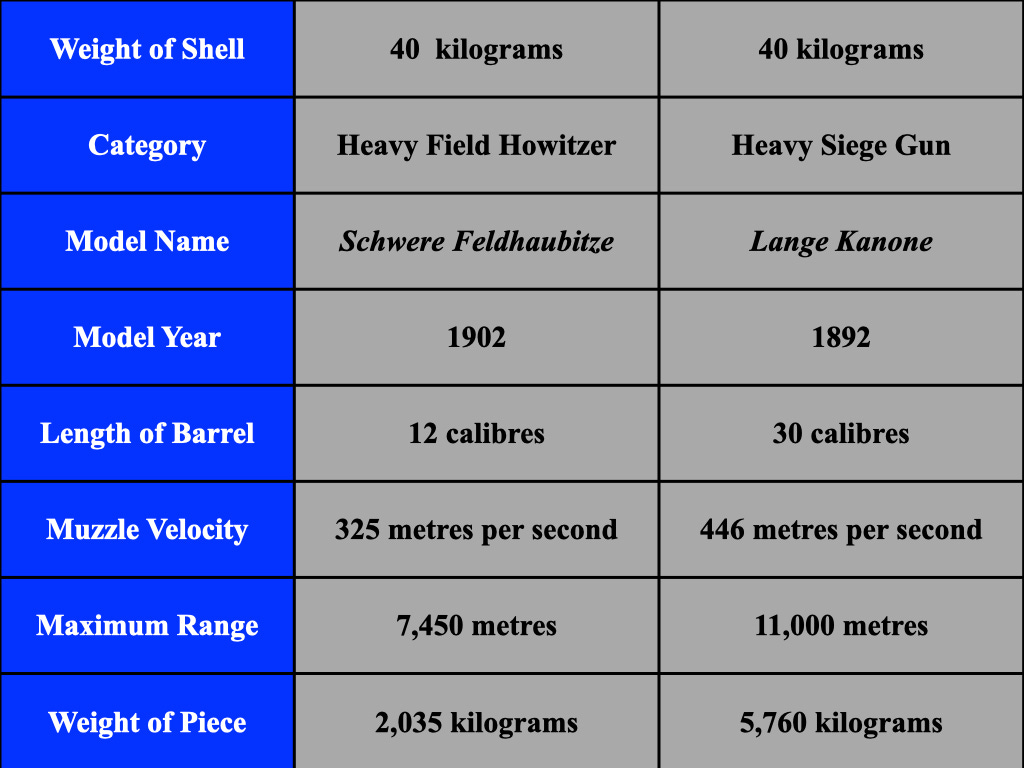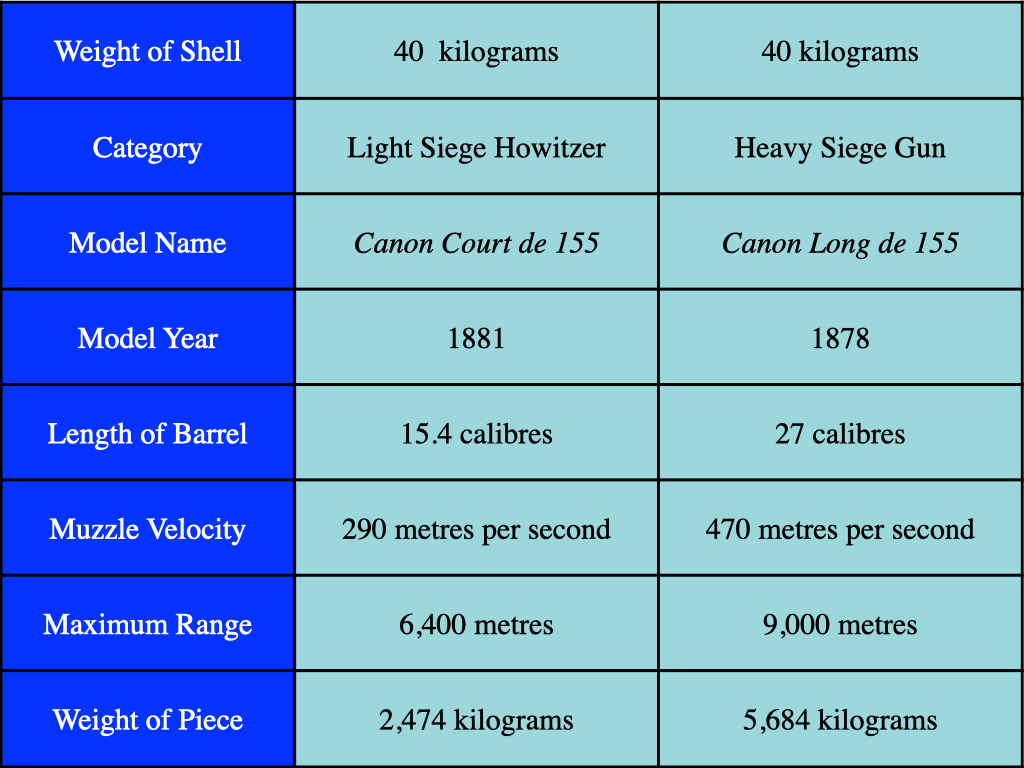Heavy Field Howitzers 1914-1915 (II)
Light and Heavy
The fact that guns were so much heavier than howitzers of the same calibre complicated the taxonomy of artillery pieces. Thus, while ‘heavy field howitzers’ fired shells with diameters of 150mm or so, ‘heavy field guns’ had calibers between 100mm and 127mm.. Likewise, while ‘light field howitzers’ fired shells similar (and, in some instances, identical) to those of heavy field guns, ‘light field guns’, with calibers between 75mm and 90mm, used projectiles that were much smaller. (Light field guns, which armed the vast majority of field batteries, greatly outnumbered heavy field guns. Thus, when describing them, authors often omitted the adjective ‘light’.)1
German 150mm (5.9-inch) Artillery Pieces
British 6-inch (152mm) Artillery Pieces
French 155mm (6.1-inch) Artillery Pieces
The following page provides links to all of the articles in this series.
Data for the German 150mm howitzer come from Linnenkohl, Vom Einzelschuß zur Feuerwalze, p. 91. Those for the 150mm gun come from Herbert Jäger, German Artillery of World War I, (Ramsbury: Crowood Press, 2001), p. 34. (As these latter figures were translated by Herr Jäger from their metric originals into standard English units and then re-translated into metric units by the author of this paper, they are probably not as accurate as the other figures presented in these charts.) Data for the British 6-inch pieces come from Thurston and Hogg, British Artillery Weapons and Ammunition, pp. 124-25 and 128-29. Technical data for the French 155mm pieces comes from Jules Challéat, Histoire Technique de l’Artillerie de Terre, Tome II, pp. 16-17.







